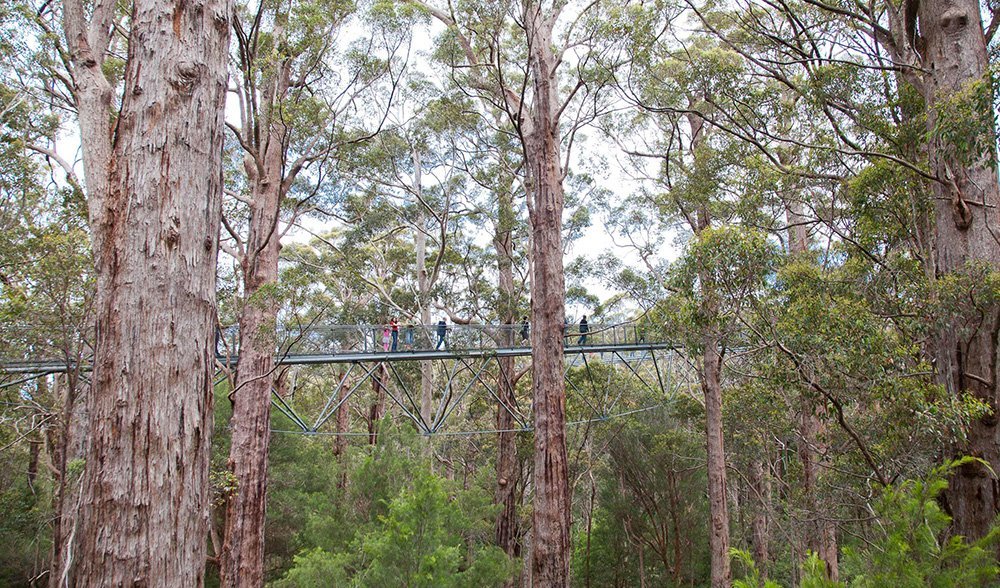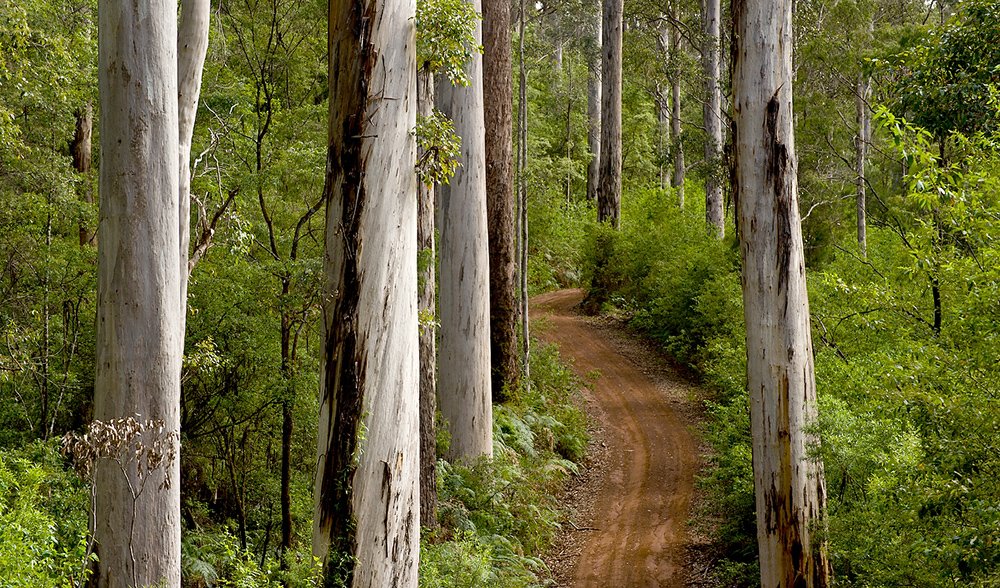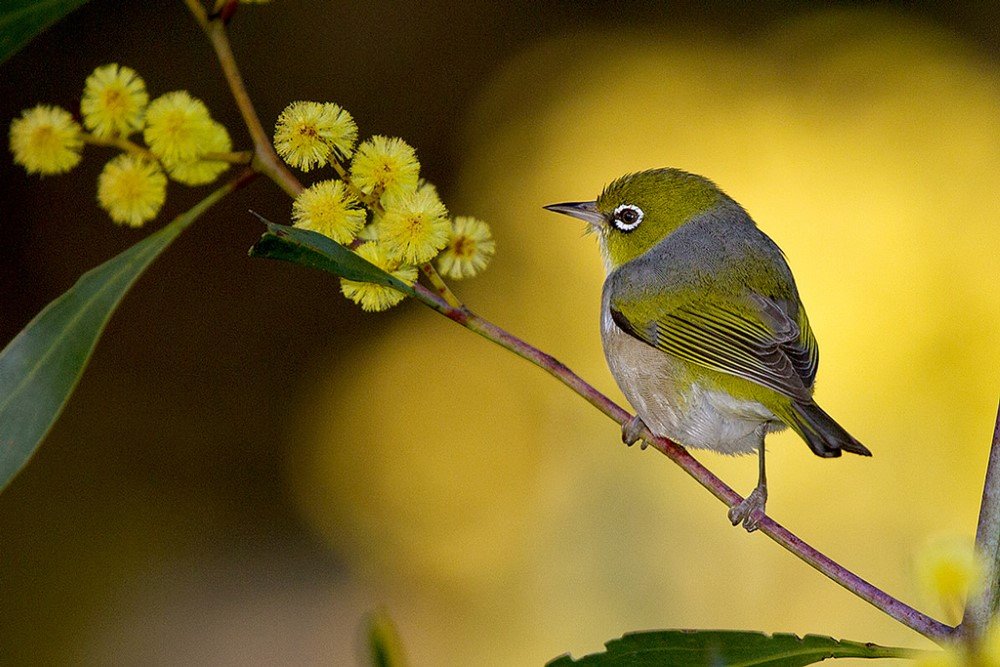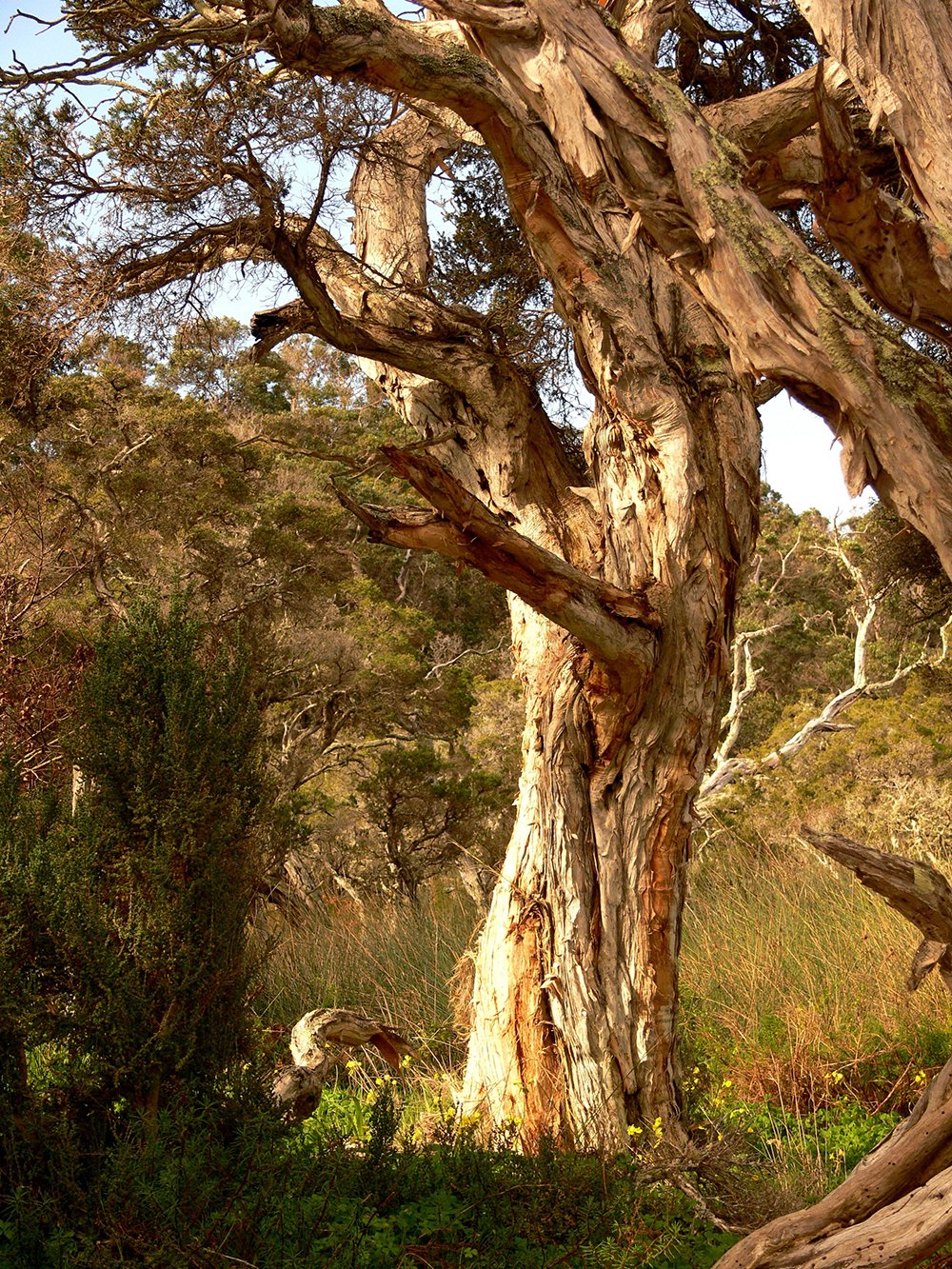Getting to know Australia’s diverse forests

THE SOUND OF waterfalls cascading amongst the lush rainforest understorey, the smell of eucalyptus on the air after the rain – Australia’s forests are both unique and wonderful to experience.
With 125 million hectares of forest – 123 million of those being native – Australia has the seventh biggest forest area in the world, making up three per cent of the Earth’s forests.
No state or territory misses out, with uniquely Aussie forests stretching from the cool-temperate south-west corner of WA to the warm, wet tropical regions of north east Queensland and the cool Tasmanian terrain.
And such a wide distribution doesn’t come without huge variation – generally named after the key genus of tree species in each, Australia’s forests are categorised into eight types – acacia, eucalypt, callitris, mangrove, casuarina, melaleuca, rainforest and ‘other native forest’.

Towering mountain ash trees in the early morning fog. Image: Sam Hammond
Forest values
Australia’s forests have a number of biodiversity, conservation and cultural values, as well as providing commercial resources such as honey, essential oils and timber.
More than 16,800 vascular plant species are found across the country’s forests, providing essential food and habitat for over 2200 forest-dwelling vertebrate animals.
“Forests are the major areas which contain biodiversity at a global level,” explains Grant Wardell-Johnson, Associate Professor of Environment and Agriculture at Curtin University. “In each of Australia’s forests you’ll find a unique suite of species reliant on that vegetation.”
They are also the focus of much of Australia’s ecotourism, bringing campers, bushwalkers and birdwatchers from around the country – and the world – to our shores, generating income, creating jobs and supporting small towns on forest edges.
“They’re wonderful places for people to visit now – they come to see forests to walk in them like the Tree Top Walk in the Valley of the Giants near Walpole,” Grant says.
“I think there’s a lot of reasons ecotourism is becoming more and more popular – people have more time to visit them, there’s increased awareness of them and many people live in cities and need to see the biodiversity in the natural world.”
“There’s still biodiversity in the city – but the ecosystems have been fundamentally altered. Seeing an ecosystem in the natural world – that’s a marvellous thing to see.”

Karri trees (Eucalyptus diversicolor) are the tallest eucalypts in Western Australia, standing between 81m and 85m tall. (Image: Bill Hatcher/Australian Geographic)
Why so much variation?
From 10-15m tall shrubby acacias to eucalypts towering almost 100m high, two-tiered forests with lush understoreys and mangroves, there are vast differences across Australia’s forests.
“At the broad level, climate is the major driver of vegetation types,” Grant explains. “But there’s another factor which has a significant effect – fire.”
“Without fire, the savannahs of northern Australia would be forest, but because of frequent fire it remains sparse. Every year you can have the landscape burn due to the monsoonal weather – it’s very fire prone as you tend to get lightning just at the end of the monsoon season, going into the dry season.”
“In the middle of Australia it is largely desert – you might have 100mm of rainfall in one go, but then you might go two years without a drop, so the vegetation is largely ephemeral [short-lived].”
While climate and fire are significant vegetation structure driving forces on a broader scale, other environmental factors come into play to shape the characteristics of forest ecosystems on a smaller scale.
“Edaphic – soil and landscape – factors are important on local scales – they have an impact on the actual pool of species that lives in the area,” Grant says.

Appreciating Australia’s forests is the first step to realising their value and protecting them. Pictured, The Valley of the Giants Tree Top Walk, WA. (Image courtesy Walpole Wilderness Discovery Centre)
Forests under threat
Australia’s forests often house endangered flora and fauna, and they themselves are not without threats either – battling the impacts of deforestation, land clearing for agriculture, climate change and human use.
“With climate change, one of the really big problems is more frequent, intense fires, every 20-30 years,” Grant says.
Fires this frequent have the potential to wipe out stands of even fire-tolerant forests, not providing them enough time to recover and re-establish between burns.
So what can we do to make sure these forests are here for the future generations of Australia?
“People’s actions can be passive – like going and appreciating the wonderful forests we have – or active, by engaging in a more sustainable lifestyle,” Grant says.
“People need to make a lot more noise to reduce carbon emissions, we should be moving to renewable energy as quickly as we can. It’s inevitable we’ll get more warming, but we can slow the rate, but we have to be acting now.”
Grant also says managing the booming ecotourism industry is key. “There’s potential to damage the forests if we don’t manage the tourists and people that come to visit them,” Grant says. “People have a large footprint, and lots of people have an even bigger one, so that’s really important.”
“Australia is the lucky country – because of the forests we have. But you can’t live on luck alone – you’ve got to look after it too.”
Eucalypt

Karri (Eucalyptus diversicolor) forest along the Warren River in WA’s Warren NP. (Image: Bill Hatcher/Australian Geographic)
Found in almost all forest vegetation types in Australia, across all states and territories, Eucalypts cover 92 million hectares and account for 75 per cent of Australia’s forest area.
Eucalypt forests include species from three genera – Eucalyptus, Angophora and Corymbia – and the tallest flowering tree in the world, swamp gum (Eucalyptus regnans).
“They’re iconic Australians in that all but a very small number are endemic to Australia,” Grant says. “They are incredible trees – truly spectacular.”
Different types of eucalypt forests are found around the globe, from wet-schlerophyll forests in high rainfall zones (1000-2000mm), to dry-schlerophyll forests in regions receiving less than 1000mm of rain annually.
Having evolved in a drying climate, eucalypts are generally fire-tolerant species, with the ability to regenerate after intense fire.
“If there is no fire for 5-600 years, eventually the trees will die and get replaced by rainforest,” Grant explains. “But if there is a fire in the eucalypt’s lifetime, it will regenerate as eucalypt forest.”
“Their bark acts as an incredible insulating layer protecting the epicormic buds which will resprout after fire.
These tall trees often provide vital habitat and food for forest-dwelling animals, with 30 per cent of native birds and mammals using tree hollows for nesting.
“They also provide a range of ecosystem services, their flowers produce wonderful nectar to birds, vast numbers of insects and invertebrates that are restricted to eucalypt species,” Grant says.
Top places to see eucalypt forest:
- Great Forest NP, VIC
- Yellow Box Woodland, SE Australia
- Brindabella NP, ACT
- Karri and Tingle Forests “The Valley of the Giants”, WA
- Blue Mountains NP, NSW
Acacia

Acacias are striking in colour, and provide perching sites for native birds like this Silvereye and food for native animals. (Image: Patrickkavangh/Flickr)
These often brightly hued flowers light up the bush in a spectacular display in spring, with their distinctive, pom-pom shaped blooms ranging from white to golden-yellow in colour.
With 9.8 million hectares of acacia forest across the country, it accounts for eight per cent of Australia’s forests and, like the eucalypts, is an iconic Australian species, with the golden wattle (Acacia pycnatha) the national floral emblem, featuring on the Coat of Arms.
With almost 1000 species, it is the largest genus of flowering plants in the country, found in the more arid regions of each state and territory, and plays an important role in fixing nitrogen into the soil.
Top place to see acacia forests:
- Brigalow Belt, QLD
Rainforest

The Mossman Gorge section of Daintree National Park, a World Heritage-listed area. (Image: Andrew Gregory)
Found across 3.6 million hectares, rainforest accounts for three per cent of Australia’s forests, with over half of them found in Queensland, and 20 per cent in Tasmania.
“The rainforests of Australia have a unique biota – many of the species that occur in rainforests are of Gondwanan origin, so they’re hanging on in a drying climate – they’ve been hanging on for tens of thousands of years,” Grant says.
These forests – about a third of which are in UNESCO World Heritage site – are rich in biodiversity, home to 60 per cent of Australia’s plant and butterfly species, 40 per cent of bird species and 35 per cent of mammalian species.
There is a range of different types of rainforest depending on the amount of rainfall and latitude, from dry rainforests in northern WA to tropical rainforests in north and north-eastern Australia.
Top places to see Australia’s rainforests:
- Kuranda and Daintree NP, QLD
- Lamington and Springbook NP, QLD
- Kakadu NP, Jim Jim Falls, NT
- Cradle Mountain-Lake St Clair NP, TAS
- Barrington Tops NP, NSW
- Mt Warning NP, NSW
- Great Otway NP, VIC
Mangroves

Mangroves in Daintree National Park, Queensland. (Image: Kyle Taylor/Flickr
With 41 species, Australia is home to over half of the world’s mangroves, most of which are found in coastal areas in Queensland and the Northern Territory.
Mangroves are perhaps most well-known for their unique root system, consisting of exposed breathing roots, and provide habitat for both aquatic and land-dwelling fauna, as well as nurseries for commercial fisheries.
“If you go into a mangrove forest, you’ll see a large suite of birds that largely occur solely in that mangrove forest – as well as your estuarine and aquatic fauna,” Grant says.
Generally located in coastal areas between the ocean and wetlands, they have an important role in preventing erosion and protecting often threatened wetlands from damaging weather events.
“They are such an important buffer for wetlands from the ocean, so when we have storms or the ocean rises, they are incredibly important,” explains Grant.
Top places to see mangrove forests:
- Top End, Northern Territory
- Hunter wetlands NP, NSW
- Bunbury Inlet, WA
Callitris (Cypress pines)

Black cypress pine (Callitris endlicheri) in Oxley Rivers NP, NSW. (Image: John Tann/Wikimedia)
Also known as Cypress pines, these forest species – which are not true pines – occur only in Australia and New Caledonia.
There are 13 species found in Australia, covering 2.1 million ha across all states, but are largely located in NSW.
“Callitris is wonderful forest in the drier country,” says Grant.
Due to the wood of these species being naturally durable and insect-resistant, their timber is regularly used for modern furniture, fencing poles and floorboards.
Top places to see callitris:
- Snowy River NP, NSW
- Wild Rivers NP, TAS
Melaleuca (paperbarks or tea trees)

The moisture held in thick, spongy, outer bark layers on melaleucas protects the deeper wood of the trunk during fire. ‘Epicormic’ shoots sprout directly from the trunk afterwards. (Image: Andrea Deegan)
The characteristic multi-layered, thin, papery bark of many melaleucas is responsible for their common name, the paper barks.
There are 200 species in Australia, most of which are endemic, found across 6.4 million ha in the north of Australia, with over 80 per cent of melaleuca forests in the Cape York region.
“Melaleuca tends to be in the wetter parts of southern Australia and the swampy zones of south east Queensland,” says Grant. “They are often quite species rich, in riparian zones.”
Like mangroves, they provide habitat for both land and aquatic species, including a large number of water birds, and maintain water quality by reducing erosion and sediment run-off.
The foliage of some species is also the source of a number of essential oils sold around the country, due to their antibacterial and germicidal properties.
Top places to see callitris:
- Cape York Peninsula, QLD
- Eubenangee Swamp NP, QLD
- Top End, Northern Territory
Casuarina (she-oaks)

Scrub she-oak (Allocasuarina distyla) in Burnum Burnum Reserve, Jannali, NSW. (Image: John Tann/Wikimedia)
Casuarina forests include species of both the Casuarina and Allocasuarina genus, and covers 1.3 million hectares across all of Australia’s states and territories.
The majority of these forests are found in NSW and QLD, with the tallest forests reaching only 20m.
Often growing along riverbanks, they reduce erosion and fix nitrogen into the soil, making it more nutrient-rich for other plant species.
The wood of these trees is often used in wood-turning and cabinet making due to the attractive colour of the grain.
Top places to see casuarina forests:
- Reedy Creek Reserve, QLD




